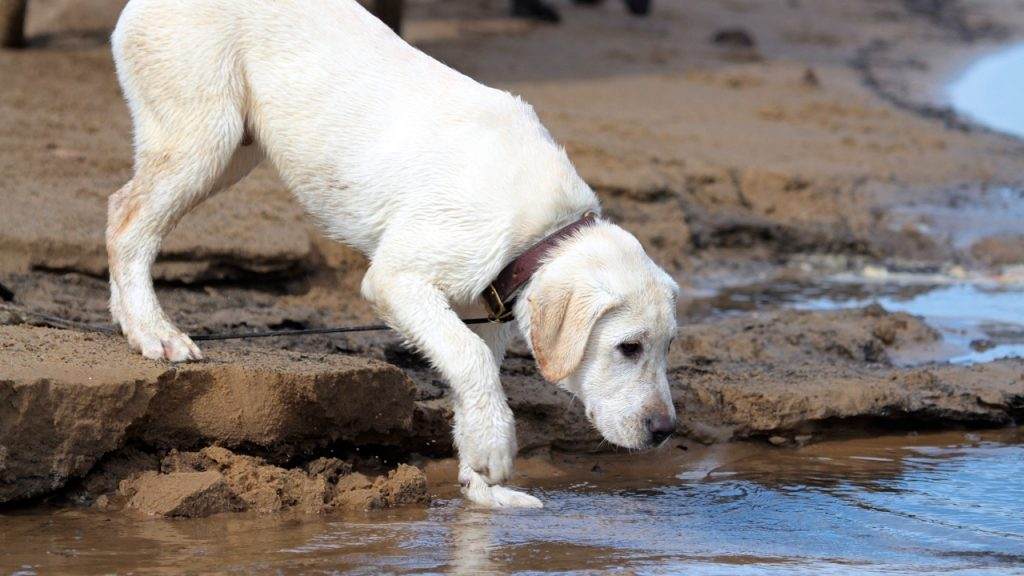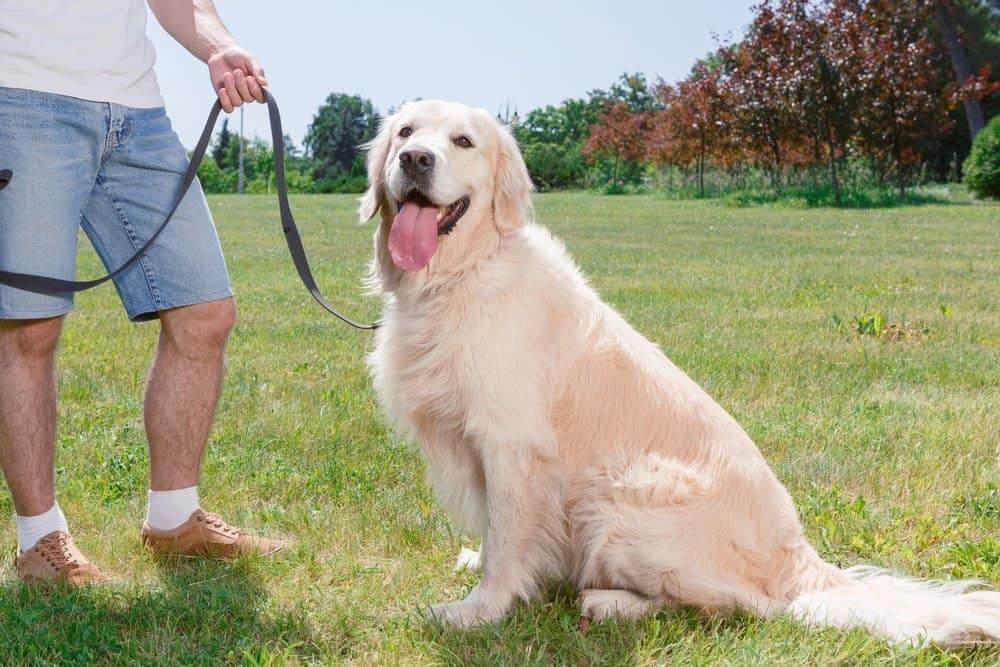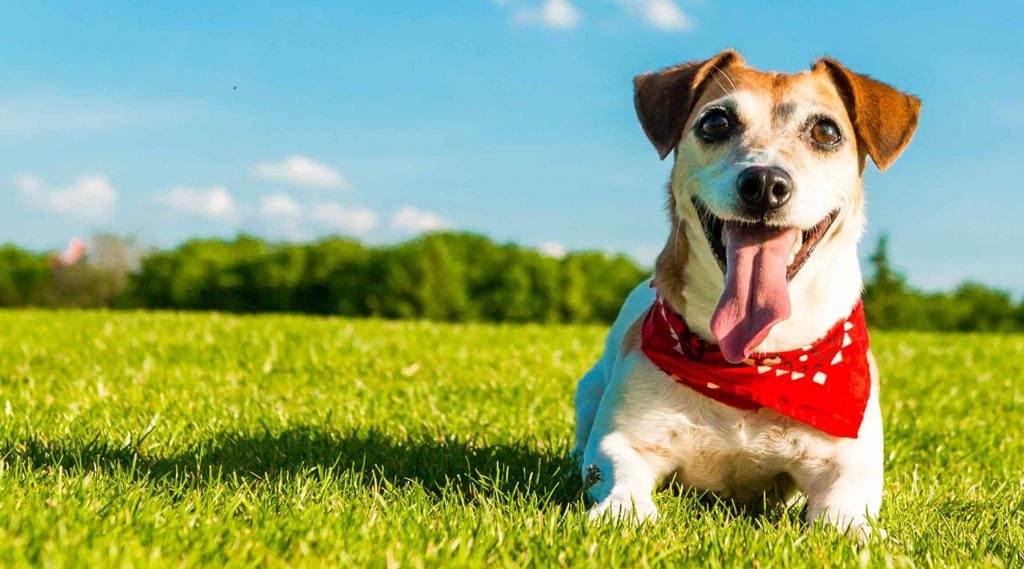Labrador Retrievers makes an ideal family dog breed as they are super friendly, lovable, high- spirited animals. Labs have several endearing traits which makes them a popular family dog breed. Labradors are usually quite laid back and calm, they do not show aggressive behaviors in normal scenarios. They have a protective instinct towards the family like any other dog, but they’re also the most affectionate and welcoming towards other creatures.
Labradors are well recognized for their talent and skill to work along with humans as allies. They are fit for a family dog and they shine at other important jobs, such as scenting dogs for law enforcement, guide dogs, search and rescue dogs. We easily know them to be working as duck hunting buddies, and they form the cutest show dogs. We see them worked in all kinds of conditions.
One must not get muddled with whether they are devoted! They are much loyal and defensive of their owner. But they are not that overbearing about their areas as other dog breeds can be. They are very loving towards almost anybody. It is uncommon for them to show an aggressive nature without someone provoking them to do so. Despite all the above-mentioned aspects, we do not recognize them to form an excellent guard dog. They’re naturally calmer, but if you provoke them, they can very well turn into a monster.
An average Labrador dog may not be the first preference for a guard dog. However, you can always teach them to become one. Yes! that’s not something unimaginable. Labs are exceptionally smart and because of their keenness to partner with a man, you can certainly train them to grow into a guard dog. Just like any other dog, they also preserve their territory.
To train your Labrador Retriever to grow into a guard dog, it calls for a lot of persistence but first, let’s discuss their traits.
Traits of Labradors
- Before training your dog, find out their natural tendencies. Try to recognize their behavioral traits first. Labradors are multi-skilled, they have excelled at various jobs. They have worked jointly with a man alongside which constructed their tendencies to integrate with human life remarkably well. Because of their accepting and warm behavior, it is hard for them to discriminate amongst a friend and an intruder. A burglar can easily fool your Lab.
- If we talk about their temperament, they’re very laid back. Some Labs are comparatively more zealous as puppies, but as they grow older, they become smoother.
Before you can set up training with your Lab, you must have your hands on a few things. Stock up on tasty treats or split their favorite food into small portions. It will again require some toys, clickers, and a friend or two. You will again require to set aside 15 minutes each time for training. Try to find a time where you both won’t be distracted. Another benefit of this training will be that you will have an awesome approach to connect with your dog.
If you train your dog in an appropriate form, you can for sure turn him into a standard guard dog. Find enough time every day to train them. Another upside of this training is you will get enough time to spend with your hound and develop a good camaraderie.
Steps to Observe while Training a Lab as Guard Dog

Start teaching your dog while he is still little. The earlier you start coaching, you’ll see the desired developments in your dog’s behavior. Treat your dog every occasion he growls at intruders. This will encourage such behavior. Some dog owners wait until the puppy turns 6 months old, but I would propose that you start training your puppy as early as possible. Because dogs are more enthusiastic and have that zeal to learn things when they are young. Plus, it is always best to commence learning in the early stages of life. Once you start training your puppy, you could observe shifts in their temperament within a few weeks of training. It is imperative to introduce training when they are young, as you can easily modify their temperament at that stage of their life and coach them to be territorial.
- Teach them Basic Commands
Before start training, you are sure that he knows and follows your command. Teach him basic commands like, “run”, “stay”, “stop”, “down”, “sit”, etc. This will ensure that you don’t lose control over your dog when you are trying to coach him.
- Practice with Strangers
Bring strangers around the house to perform this step. In this scenario, capture your dog’s attention, point towards the stranger, and continue yelling “bark”. Have a friend to knock at the door a few times and then yell “bark” to your dog. Keep repeating these steps a couple of times. Hence he will understand to “bark” at your command, which is what we want eventually. Once it starts barking at your command reward him with his favorite treats or give him his toy. That’s how he will start relating it with something good and rewarding.
- Be patient
It is as essential as any other step that you hold your calm throughout the training. Do not get aggressive with the dog or punish him. This will make your dog unnerved, which is not what we need at this stage. Patience is the key while practicing your dog for just about anything.
- Diet and physical activity
One more necessary matter is, you require to pay attention to is his diet. Make sure he is active enough because lab retriever tends to grow obese easily. Be sure you feed him only healthy treats so he remains in shape, otherwise it will be challenging for you to get him out and about. He will probably feel lethargic all the time and will get tired within a few minutes.
Territorial Method
- Take your lab retriever out for walks twice a day, during mornings and evenings, around the periphery of the area you want them to guard. Your dog will naturally start getting a sense of that area as his territory, which he will defend instinctively. Repeat the same thing every evening as well. Take your dog around the same area or path. This territorial training will prove to be a perfect start. You’ll notice the results relatively quickly with this approach.
- Get them all worked up by compelling them to bark as you see any stranger coming. Make certain the dog is on a leash while you train him to do so as your training him just to bark at a newcomer, not run to harm him. This can be a little time consuming as you must train to bark at command first, trust me you cannot pass up this step.
- Now if he barks at the command successfully give him a treat. Make sure you reward him within a few seconds otherwise he may not acknowledge it as a reward. Praise and he on every successful step. This will naturally encourage such behavior.
Train to Attack on Command
- The first and foremost thing during this method is safety. Buy some protective gloves that can cover your arm and ensure that you don’t get injured while training your dog.
- Choose an area with lesser distractions. An open field or a playground where nobody is around. Do a little warm-up, where you practice the commands with your dog and see if he’s responding well to your commands or not.
- Now put your hand right in front of our dog’s face and try to provoke him. Make sure that you yell your “attack” word. This will help him relate that word to attacking the stranger. You can use the word “attack” or any other word of your choice, it will be just between you and your dog.
- Praising your dog with words or rewarding him after every step is an important part of this training. You need to reward him after every successful session. With the time he’ll be able to understand that, this is something you want him to do whenever you yell the word. Move a little further away from the dog and then yell the word “attack” from some distance to see if he is responding to it or not. Repeat this step quite a few times in a day.
- Take a quick break after every session, it is very important. Repeat the same steps once again. Now the next step would be training him either with a blow-up doll or any other human-looking prop. Leave it at some distance and yell “attack” while pointing towards the prop. In the beginning, it may not work as it was supposed to as the dog doesn’t understand fully what you meant by pointing towards the prop. you can run along with your dog towards the prop while yelling “attack” do this for a couple of times so that the dog gets an idea what you are asking him to do.
- Make different fake scenarios while training your dog. Despite all the training it Is quite natural for a dog to misunderstand in certain situations. He might take a friend as a foe. So another important command you need to teach your dog is to “stop”. Your dog must learn to “stop” whenever he is asked to do so so that no harm is done to an innocent being. If you see your dog getting alarmed unnecessarily you need to tell him to “stop” immediately. Training to respond to stop is vital as when a dog gets aggressive he might not listen at first, you need to get his attention so that he follows through.
Labs can serve the purpose of a watchdog comparatively well than as a guard dog. There are several reasons behind it. But first, there seems to be a lot of confusion amongst the individuals concerning how to differentiate between a guard dog and a watch dog. A watchdog and a guard dog are not the same.
Difference Between a Watchdog and a Guard dog

A guard dog can be an excellent watchdog as well, but vice versa is not always correct. Here are a few marks which can aid you to differentiate between the two.
What are watchdogs?
Watchdogs’ primary responsibility is to be alarmed and be aware of any odd sound or shifts in their territory. A watchdog should be capable to discriminate between familiar or foreign noises. Hypervigilant dogs are the entities that are over alert, which is because of the lack of enough socializing. A watchdog recognizes his area and barks every time there’s something unusual. This could be anything small or even as big as 4 times their size. Their main talent is to bark at anything unfamiliar. Most of the smaller breed dogs like chihuahuas poodles, terriers make a good watchdog as they bark on anything significant which can notify you of probable perils.
What is a guard dog?
An Ideal guard dog barks loudly and he can again attack if prompted to do so. Initially, they bark to the alarm of the infiltrator and if that doesn’t imply to work he may attack the intruder if free to do so.
Characteristics of a Desirable Guard Dog
You will identify specific attributes that are prevalent amongst all breeds of guard dogs. Some natural aspects or traits that we notice among ideal guard dogs are as follows.
- Physical Appearance
Physical appearance suggests to play a fundamental role as essentially all the guard dog breeds have a powerful physical built, pointy ears, firm posture, focused minds. We generally consider all these qualities very intimidating. They have a substantial muscle built and do not become obese as they are remarkably active.
- Intelligence or Alertness
An alert or intelligent dog will be focused, and you can easily catch his attention with even a minor commotion, nothing gets unnoticed. He will catch almost instantly any change in his surroundings. While, a regular dog will be laid back and lose his focus quickly, comparatively.
- Moderate Levels of Aggressiveness
We do not need too much aggression which may turn into an obstacle to overcome while training but limited to a moderate amount of aggression is a favorable sign.
- Courage
They stand to defend themselves and do not huddle up when they realize a danger or a threat. A brave dog will stand up against any kind of possible danger that poses itself.
- Dominance
An ideal guard dog presents itself as an alpha dog at all times. They establish their power as soon as they get to an area. They have that focused eyes and strong stable posture of an alpha dog.
- Territorial instincts
Their territorial instincts come naturally once they determine an area as their home. They do not let anyone trespass without being growled at or trailed down. They secure their area at all times.
- Loyalty
Almost all dog breeds are loyal and become defensive of their family. Although, reliability is a gained trait which a dog develops as he builds a companionship with his owner. They acquire this character as we train them. When you care for your dog like a family member, he grows attached to the tribe and builds up a sense of devotion towards them.
- Affectionate
Another best quality they occupy is, they can be aggressive when provoked but still they can swing into a love bug and the most affectionate dog when they are around the family or familiar faces. They can very well discriminate between an acquaintance and an unfamiliar person.
Conclusion
In the end to answer “Are Labs Protective Enough to be Guard Dogs?” I would like to say they may not be a person’s first choice as a guard dog, however, you can certainly train them to be one. There is no doubt about their loyalty, they are as faithful as any other dog can turn out to be. Any dog has a sense of possessiveness and protective instinct towards their family, In case of the labs you just have to bring out those instincts and work on them a little. Seeking professional help can never go wrong.
I would always suggest you go to a qualified person as you’re teaching a dog something which is not their first instinct. It can be quite challenging for you to do it on your own at first. You can always start with a little help from a professional and can take it from there. In either case, be calm and composed with your dog, aggression won’t go a long way.
Make sure you appreciate your dog and acknowledge his efforts either verbally or by rewarding him. Dogs are very intelligent animals they can very well sense when they’re being appreciated or encouraged. The important thing here is to embrace these sessions with your dog as it will not only help you train him but it will also help you built good chemistry between you.
Table of Contents





